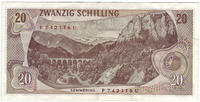You are in: Europe -> Austria -> Semmering Railway, and traditional search or Image Gallery will yield results of this site only
Semmering Railway
| Site number: | 785 |
|
| Type of site: | Cultural | |
| Date: | 1848-1854 | |
| Date of Inscription: | 1998 | |
| Location: | Europe, Austria, Between Gloggnitz, State of Lower Austria and Simmering, State of Styria | |
Up to 75 images are shown here. Click on each for more details or on Image Gallery for more images.
| Description: | One of the greatest civil engineering accomplishments from the pioneering phase of railway building was the Semmering Railway, which was built between 1848 and 1854 over 41 km of high mountains. The line continued to be used even in the present day owing to the high standard of the tunnels, viaducts and other works. The railway runs through a stunning mountain landscape past many fine buildings which were erected when the area was opened up due to the arrival of the railway, and were designed for holiday activities. --WHMNet paraphrase from the description at WHC Site, where additional information is available. For 360 degree imaging of this site, click here. | |
| The Semmering Railway, Austria, which starts at Gloggnitz and leads over the Semmering to Mürzzuschlag was the first mountain railway in Europe built with a standard gauge track. It is commonly referred to as the world's first true mountain railway, given the very difficult terrain and the considerable altitude difference that was mastered during its construction. It is still fully functional as a part of the Austrian Southern Railway. The Semmering Railway was constructed between 1848 and 1854 by some 20,000 workers under the project's designer and director Carl Ritter von Ghega. The construction features 14 tunnels (among them the 1,431 m vertex tunnel), 16 viaducts (several two-story) and over 100 curved stone bridges as well as 11 small iron bridges. The stations and the buildings for the supervisors were often built directly from the waste material produced in the course of tunnel construction. Across an overall track length of 41 km the Semmering Railway masters an altitude difference of 460 m; on 60% of its length the steepness is 20-25‰ (equivalent to a 1-meter difference in altitude on a 40 m route distance), and 16% exhibit a curvature radius of only 190 m. This was an entirely new technical dimension of railway construction, and new instruments and methods of surveying had to be developed to handle the resulting challenges. Also, new technologies were employed for the locomotives because the types in general use at this time could not handle the extreme gradients and turning radii. Even while being built the Semmering Railway was perceived as an effort of "landscape gardening", i.e. it attempted a harmonious combination of technology and nature. The unique travel experience which the Semmering Railway offered contributed significantly to the original opening of the Semmering region for tourism. Numerous hotels and mansions are witnesses of this epoch. This enormous upswing to the turn of the century and the revaluation of the region as a winter sports area in the first third of the 20th Century were interrupted first by Worl War I and then by the changed recreational needs of the population. Therefore this unique culture landscape could be preserved with little change. A trip on the Semmering Railway, which is in full use 150 years after its building, still impresses the traveller as a special experience by its varied landscape, the typical style of its mansions and the characteristic sequence of viaducts and tunnel constructions. In 1998 the Semmering Railway was added to the list of the UNESCO World Heritage sites. --Wikipedia. Text is available under the Creative Commons Attribution-ShareAlike License. For 360 degree imaging of this site, click here. | ||
| Source: | http://whc.unesco.org/en/list/785 | |
| Reference: | 1. UNESCO World Heritage Center, Site Page. | |

































